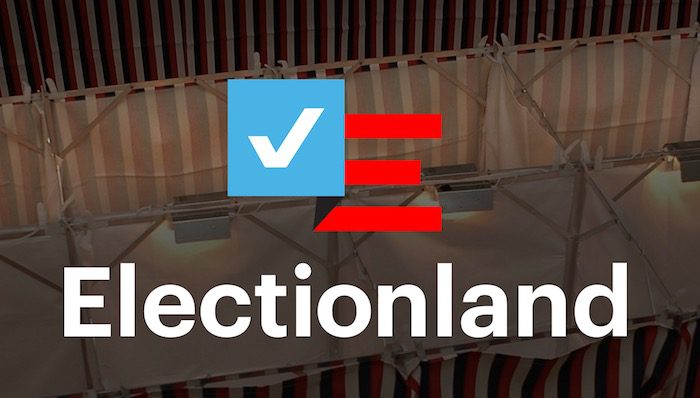
Let’s relive Tuesday, November 8, 2016 again.
Not the presidential election — the Electionland project, spearheaded by ProPublica, and an monumental effort from more than a thousand journalists and students monitoring, verifying, and writing about Election Day voting problems across the country. What went well, and what processes and tools aided in successful reporting? What would it take to replicate Electionland, covering other events, perhaps in other countries? A comprehensive new report debriefing the Electionland initiative released Thursday at the Collaborative Journalism Summit at Montclair State University examines every step in the collaboration, from the selection of newsroom partners, to the legwork done before Election Day itself, to the technical effort that went into setting up social verification and communication tools, to the physical layout of the Electionland newsroom hosted at CUNY, to a post mortem on the voting issues captured and stories written at the end of it all. (Just naming all the people involved in Electionland takes up five full pages at the end of this report.)Thanks to significant training and prep work throughout late summer and the fall leading up to Election Day, there was much day of that went as planned. (Four ProPublica journalists had started working full-time on Electionland in the summer.) A few musts, for instance, when attempting a project of this size and scope:
Keeping in mind that participating journalists from different local newsrooms around the country were likely stretched thin with their own deadlines already, ProPublica built a few tools, like its voting app and Election DataBot (with the Google News Lab team) so all reporters would have easy access to context and historical trends, backed up by data. ProPublica also put on trainings to prime participating reporters to look out for common local issues that might be part of a broader national problem, which resulted in better-informed Election Day reporting.A shared, exclusive data source makes for good partnerships: The Electionland partners united around a single, shared source of information which couldn’t have been created or accessed in any other way. This was key to bringing partners to the table and ensuring incentives were aligned. Scott Klein [of ProPublica] says, “When you’re all working around a central nugget of information, it sharpens everyone’s focus and encourages partnerships.”
Robust, flexible workflows are non-optional: Planning the flow of information and standardizing processes in a way that allowed for on-the-fly changes was absolutely essential to making Electionland work. “Having the right workflows was key — from standardizing verification and communication channels, to implementing a process for real time troubleshooting,” says Fergus [Bell, of Dig Deeper Media, part of Google’s First Draft News coalition, an Electionland a social partner].
Social media verification for Electionland involved an army of j-school students and an array of tools, from Dataminr to Meedan’s Check. A well-organized Electionland Slack was critical to quick processing of tips that originated from social media. Constant video conferencing kept j-school participants not located at the CUNY-based nerve center in the loop. WhatsApp was the major channel for tips in Spanish. The team had also prepared a WeChat account for Chinese-language tips (though nothing substantial came from there in the end).

At the end of the election, Electionland had received 990 tips on its phone line (1-866-OUR-VOTE) and 3,111 SMS messages from voters who signed up to report issues to Electionland via text (plus 775 tips from Twitter, 65 from Facebook, and 20 from Instagram).
But, these numbers are subject to change, as there was no data cleanup process in place for after Election Day. Additionally:
[M]ore precise numbers of news stories are not available, because Electionland lacked robust tracking around media coverage resulting from the project. The team has taken these lessons on board for future projects.
The full report, with detailed descriptions of the verification processes, is available here.
Leave a comment
You must be logged in to post a comment.